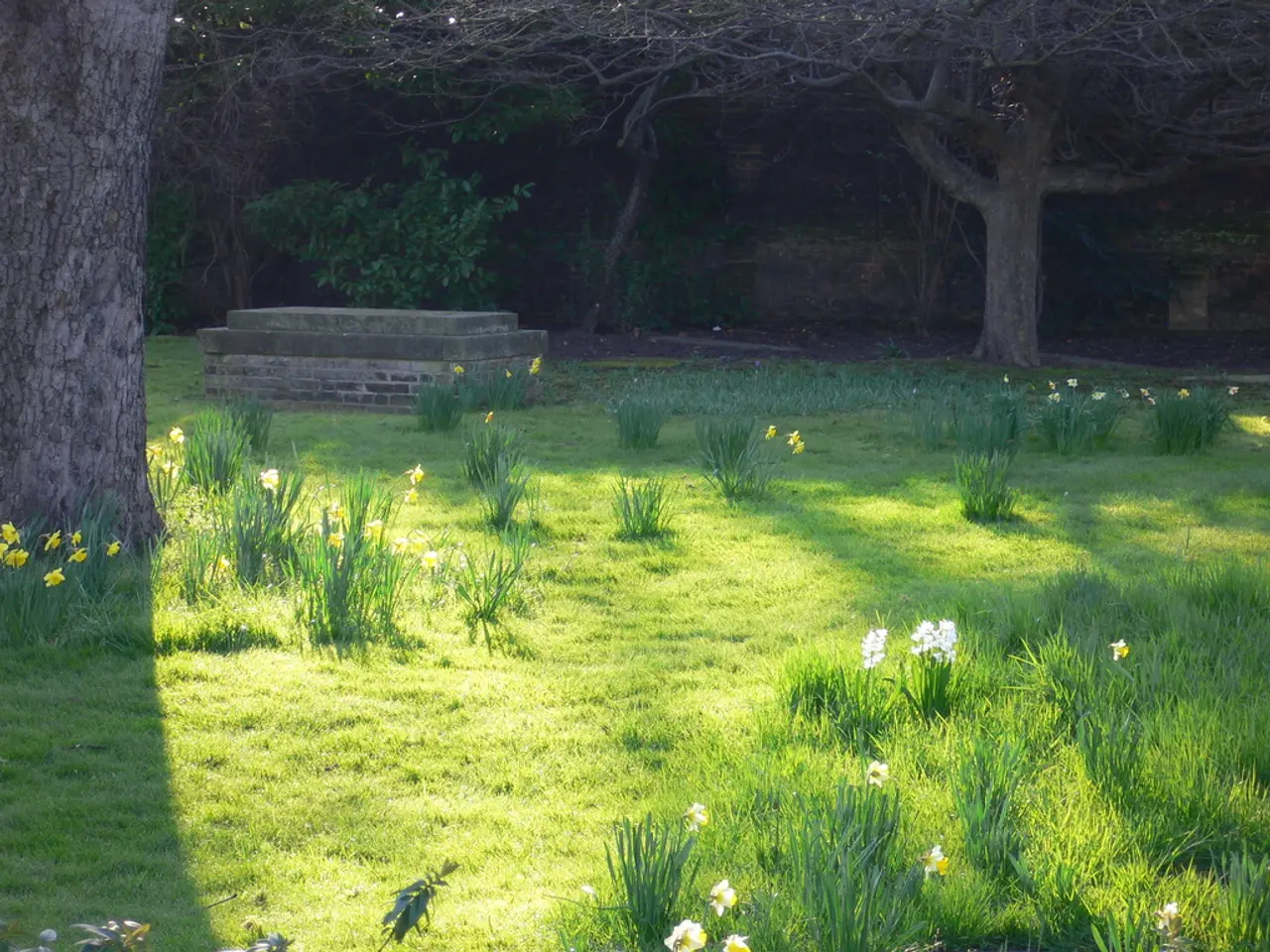Tight on space? There might still be enough room for a tree! Uncover the top picks for trees that thrive in compact outdoor spaces.
Small Gardens Benefit from Mature Trees
Mature trees can bring a wealth of benefits to small gardens, providing immediate shade, cooling effects, improved air quality, noise reduction, and enhancing landscape aesthetics. By planting mature trees, gardeners can create a pleasant microclimate, reducing heat absorption by nearby buildings and lowering cooling costs.
In addition to their practical advantages, mature trees offer a sense of permanence, especially in temporary, manufactured settings like show gardens. They serve as a magnetic presence that honors the seasons and support local wildlife by offering habitats and improving soil and water conservation [1][2][3].
Choosing the Right Tree for Small Spaces
When selecting a tree for a small garden, it's essential to consider the tree’s growth habit, mature size, soil conditions, climate zone, and purpose (shade, privacy, ornamental). Suitable options for small gardens include the Black Tupelo (Nyssa sylvatica), Crepe Myrtle (Lagerstroemia indica), Serviceberry (Amelanchier arborea), Japanese Maple (Acer palmatum), and Dwarf River Birch (Betula nigra) [1][3].
Pruning is crucial for managing size and health, especially in windy or confined conditions. Fast-growing, large, or invasive trees should be avoided, as they may outgrow the space quickly or require excessive maintenance. Instead, focus on manageable small species that balance beauty and functionality without overwhelming the space [5].
Recommended Tree Species for Small Gardens
The Black Tupelo is a slow-growing tree with striking fall color, which can be kept small if container-grown (10–15 ft) or planted in small spaces outdoors with some pruning. It tolerates a range of soil types and offers seasonal interest [1].
Crepe Myrtle is a multi-trunked, ornamental tree with filtered shade and vibrant summer blooms, thriving in warmer climates and various soils. Ideal for close proximity to houses and small yards [3].
Serviceberry is a four-season appeal tree with spring flowers, edible berries, and striking autumn foliage, growing 15–25 ft high and wide, making it suitable for small yards and providing shade [3].
Japanese Maple is a compact, elegant tree with spectacular fall leaf color, ideal near windows or porches for moderate shade and aesthetic value. It prefers partial shade and well-draining soil [3].
Dwarf River Birch is suitable for many soil types, ideal for shade and rain gardens, and perfect for limited space due to its dwarf form [4].
Mulberry Trees and More
Mulberry trees, like Morus alba or Morus nigra, can make an interesting architectural feature in a small garden. They can be grown as a standard or half standard tree, providing an instant effect, often mixed with smaller specimens that will establish quickly [1].
Hornbeam and limes are commonly trained as pleached or stilted trees, offering versatile design options for small gardens. Fig trees, such as 'Brown Turkey' or 'Brunswick', are well-suited for small gardens and can grow in containers due to their preference for root restriction [2].
'Halo felling' is a woodland management policy that allows a single tree to thrive by clearing surrounding shrubs and trees, creating a halo of light [6].
In conclusion, planting mature trees in small gardens is a worthwhile investment, offering numerous benefits and enhancing the overall beauty and functionality of the space. By choosing the right tree for the garden and providing proper care, gardeners can create a small, yet impactful oasis.
[1] RHS (2021) Small Gardens: Trees and Shrubs. Retrieved from https://www.rhs.org.uk/advice/profile?PID=516 [2] HTA (2021) Small Gardens: Choosing the Right Trees. Retrieved from https://www.the-hta.org.uk/gardening/advice/small-gardens-choosing-the-right-trees [3] Gardener's World (2021) Best Trees for Small Gardens. Retrieved from https://www.bbc.co.uk/gardening/advice/plants-trees/best-trees-for-small-gardens [4] RHS (2021) Dwarf River Birch. Retrieved from https://www.rhs.org.uk/plants/26351/Betula-nigra/details [5] RHS (2021) Cherry Laurel. Retrieved from https://www.rhs.org.uk/plants/23167/Prunus-lusitanica/details [6] Forestry Commission (2021) Halo Felling. Retrieved from https://www.forestryengland.uk/forestry/halo-felling
Mature trees, such as Black Tupelo, Crepe Myrtle, Serviceberry, Japanese Maple, and Dwarf River Birch, can beautify and benefit small gardens through their striking aesthetics, seasonal interest, and practical advantages. Landscape designers should consider the tree's growth habit, mature size, soil conditions, climate zone, and purpose while planning the garden design. Proper pruning can ensure trees maintain a manageable size while flourishing in windy or confined conditions. The selection of trees can create a small, yet impactful oasis within a home-and-garden lifestyle.




